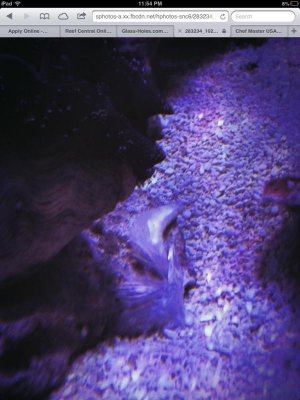Tridacna crocea are one of the more difficult to keep, requiring very good lighting and some source of nutrients and micro plankton for filter feeding and nutrients including nitrogen in absorbable forms , even though they are highly autotrophic( photosynthetic) .
Wild caught specimens have high mortality in shipping and collection and are often stressed or damaged or infested with perdatory organisms when purchased . Aqua cultured calms do better.
In nature Tridacna crocea lives in shallow water , burrows into the substrate or rock with only the mantle showing in many cases. It is equipped with a large abyssal gland , larger than maxima , which helps it anchor itself in the shallow high current waters where it lives. As Gary noted squamosa and gigas often loose their foot as they gain enough weight and bore a bit to be stabilize themselves. Those two reach very large sizes; too large for most aqauirums when mature.
BTW, healthy clams can live in captivity for decades.
There have been a number of anecdotal reports on of crocea suffering damage to the abyssal gland, particularly when moved about. It's possible some thing is nipping it or infesting it as well. I had one that lost it's foot. I made a cradle for it so it would stop falling over.
I now keep a single 5 1/2 inch blue maxima which came into my tank as a 2 inch aqua cultured youngster over 5 years ago. It has never moved from it's spot about 10 inches under the water surface under the center of a 250 w halide bulb where it receives moderate flow. It does shift around a bit but stays home.
I did not do as well with crocea but then I kept them when my tank was young and I didn't do very well with many things.


